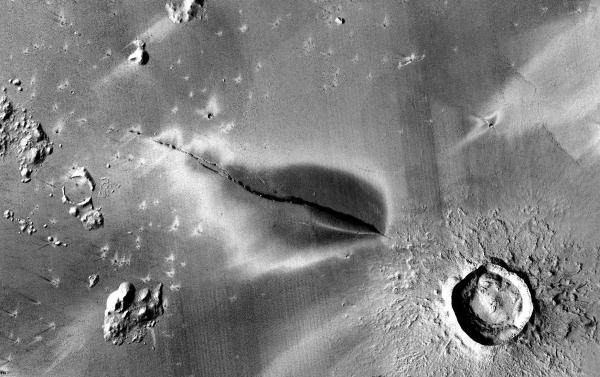The search for life on Mars continues. But rather than hunting for modern life, Perseverance, NASA’s latest Mars rover, will soon begin looking for signs of ancient life having once existed on the now dry, barren world. And though most researchers agree the surface of Mars is no longer hospitable, some suspect life could stand a fighting chance underground.
A new paper adds weight to that theory.
The study, led by research scientist David Horvath of the Planetary Science Institute, reevaluates how long ago the Red Planet’s volcanoes were active. It’s currently believed that most eruptions occurred between 3 billion and 4 billion years ago. There’s also evidence suggesting Mars’ youngest volcanoes were active about 3 million years ago. Now, new data from satellites orbiting Mars indicate volcanoes continued to rage on Mars until the much more recent past — a mere 50,000 years ago.
Elysium Planitia is the second largest volcanic region on Mars and home to NASA’s InSight lander, which has been studying tectonic activity on Mars for the past three years. In this region, researchers spotted what appear to be recent volcanic deposits around a young tectonic fissure known as the Cerberus Fossae system. “This feature is a mysterious dark deposit, covering an area slightly larger than Washington D.C.,” Horvath said in a press release. “If we were to compress Mars geologic history into a single day, this would have occurred in the very last second.”
Horvath believes the recent volcanism represents a sort of “last gasp of erupted material.” He also can’t help but note its proximity to InSight, a mere 1,000 miles (1,600 kilometers). Earlier this year, InSight even detected two powerful marsquakes near Cerberus Fossae. These and other marsquakes have led some researchers to consider the possibility that magma is still flowing through the Red Planet’s interior. “The interaction of ascending magma and the icy substrate of this region could have provided favorable conditions for microbial life fairly recently,” says Horvath. And if the area is still active, he thinks it’s possible that life could still be hiding there.










